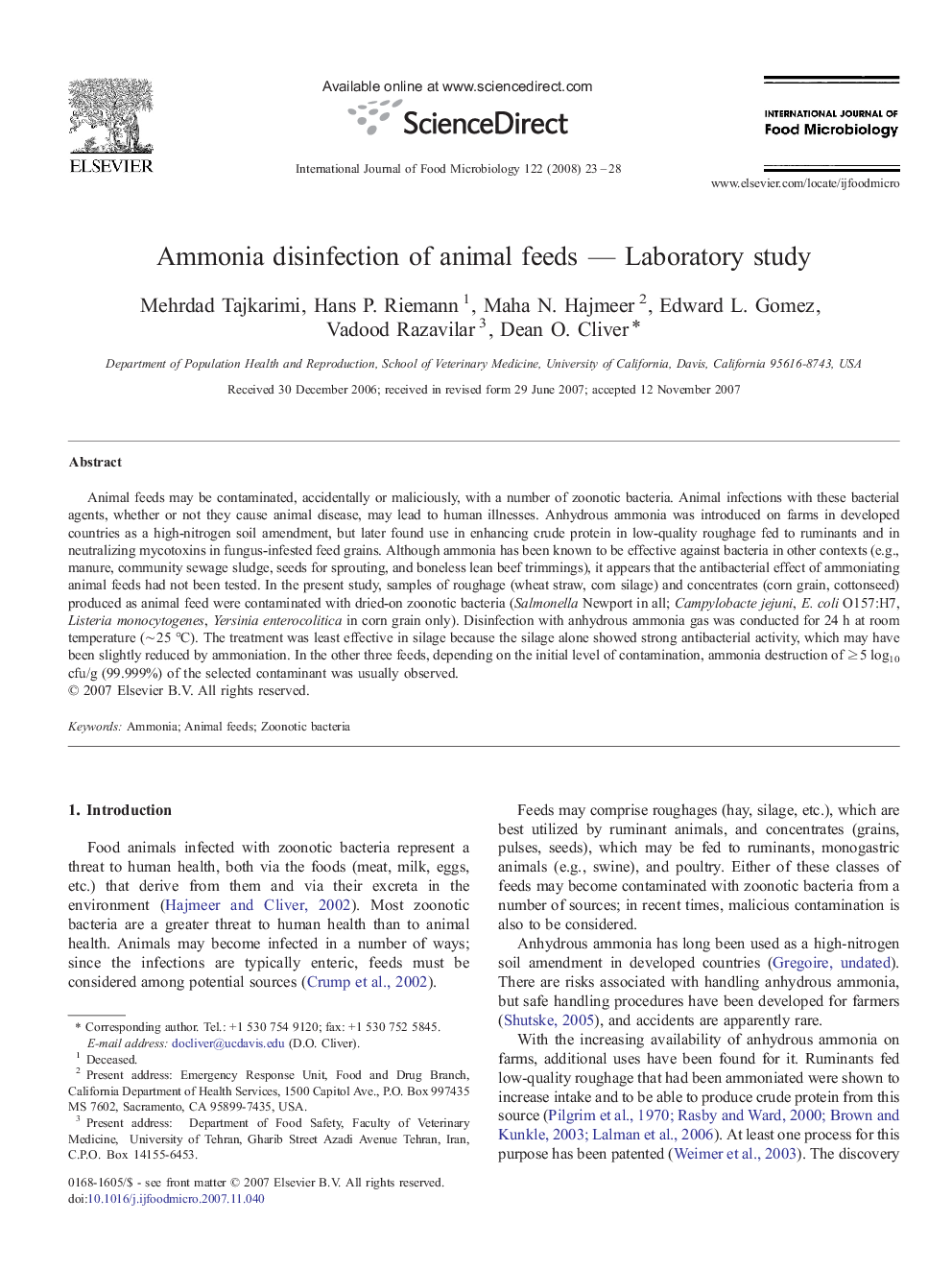| Article ID | Journal | Published Year | Pages | File Type |
|---|---|---|---|---|
| 4369510 | International Journal of Food Microbiology | 2008 | 6 Pages |
Animal feeds may be contaminated, accidentally or maliciously, with a number of zoonotic bacteria. Animal infections with these bacterial agents, whether or not they cause animal disease, may lead to human illnesses. Anhydrous ammonia was introduced on farms in developed countries as a high-nitrogen soil amendment, but later found use in enhancing crude protein in low-quality roughage fed to ruminants and in neutralizing mycotoxins in fungus-infested feed grains. Although ammonia has been known to be effective against bacteria in other contexts (e.g., manure, community sewage sludge, seeds for sprouting, and boneless lean beef trimmings), it appears that the antibacterial effect of ammoniating animal feeds had not been tested. In the present study, samples of roughage (wheat straw, corn silage) and concentrates (corn grain, cottonseed) produced as animal feed were contaminated with dried-on zoonotic bacteria (Salmonella Newport in all; Campylobacte jejuni, E. coli O157:H7, Listeria monocytogenes, Yersinia enterocolitica in corn grain only). Disinfection with anhydrous ammonia gas was conducted for 24 h at room temperature (∼ 25 °C). The treatment was least effective in silage because the silage alone showed strong antibacterial activity, which may have been slightly reduced by ammoniation. In the other three feeds, depending on the initial level of contamination, ammonia destruction of ≥ 5 log10 cfu/g (99.999%) of the selected contaminant was usually observed.
